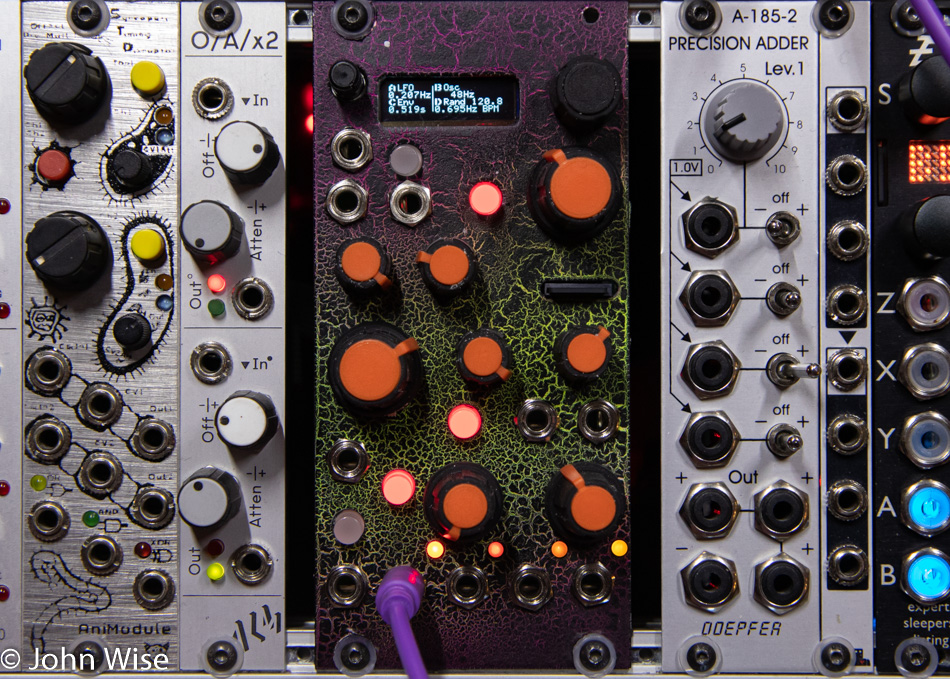
Modulation madness may be a cheesy way to quickly describe this updated Eurorack module from Industrial Music Electronics (IME), but madness may be the most apt description. Welcome to the Kermit MKIII Quad Modulation Aid, which is soon to be released.
During the previous months, I’ve been putting the firmware through its paces, looking for things that may not be working as programmed or that I perceive as flawed. When Scott Jaeger made me aware that he was updating his previous design that was approaching its 5th birthday, I thought he was going to deliver what amounted to a quad LFO. It could be considered that, but it’s a magnitude more ambitious than that.
As a modulation aid, I don’t believe there’s anything in the world of Eurorack that seriously comes close to this refresh of the Kermit.
Making generative music requires elements of randomness, and Kermit far exceeds the capabilities of the previous model. While the original Kermit certainly offered complex forms for its LFO shapes, it was still basically a dual-channel LFO as far as my usage was concerned. Early in the development stage of this MKIII version, the LFO menus were the first to solidify the module in a working state and were consistent with my expectations for what I thought this module would be: four channels of LFO.
Then complexity kicked in. Oscillators, Sample and Hold, Envelopes, Random, Tap Tempo, and internal cross modulations of nearly everything were becoming features. Within those features were other features starting to offer a matrix of potential that took me a minute to get my head around. But don’t think of what I just described as being some kind of four-channel version of the Expert Sleepers Disting and its 84 algorithms. The functions I’m referring to in the new Kermit are all part of the control set of affecting parameters of modulation.
I could try to compare this to the 22HP Control Forge, but where that complex module has eight stages and essentially one main CV output that allows it to act as a looping envelope, the Kermit is only 12HP with four channels that aid the user in delving into sonic psychedelia with quick randomization that spews intricacy from its outputs.
The user can certainly use this module as a straight-up, easy-to-work-with LFO, but it’s when you start to explore the 1V/Oct and CV control of parameters combined with the internal cross modulations that the idea of Quad Modulation Aid takes on properties that exceed the imagination. You are left wondering just where Scott’s mind goes to find these relationships.
It could be said I’m biased because I’m testing these modules, but that would ignore the fact that I don’t need to write anything about IME and its products other than the nearly 30 emails and 150 observations, notes, questions, and personal blunders of my own ignorance I shared with Scott about the Kermit.
In a sense, this is a blog entry to myself, so I might remember my impressions and some of the details of the previous months and what it took to get to the point where Kermit was on the verge of being released to the general public.